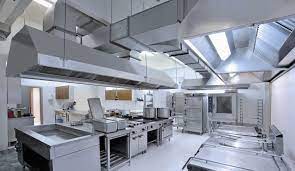The hood system is a critical component of any restaurant kitchen, as it plays a vital role in ensuring a safe and healthy cooking environment. The hood system is designed to remove smoke, steam, and other airborne contaminants from the kitchen, improving air quality and preventing fire hazards. In this article, we will explore the restaurant hood systems in more detail, including its components, how it works, and why it is so important.
Components of a Hood System
A hood system is made up of several components, each of which plays a critical role in the overall function of the system. The main components of a hood system include:
- Hood
The hood is the most visible component of the hood system, and it is the part that is typically mounted above the cooking equipment. The hood is designed to capture smoke, steam, and other airborne contaminants that are produced during cooking.
- Exhaust Fan
The exhaust fan is responsible for drawing air through the hood and pushing it out of the building. The exhaust fan is typically located on the roof or exterior wall of the building, and it must be sized correctly to ensure that it can effectively remove all of the contaminants from the kitchen.
- Ductwork
The ductwork is a series of pipes that connect the hood to the exhaust fan. The ductwork is responsible for carrying the contaminated air from the hood to the exhaust fan, and it must be properly sized and installed to ensure that it can handle the volume of air that is being produced.
- Make-Up Air Unit
The make-up air unit is responsible for replacing the air that is being removed from the kitchen through the hood system. The make-up air unit is typically located on the roof or exterior wall of the building, and it must be properly sized to ensure that it can provide enough fresh air to the kitchen.
- Fire Suppression System
The fire suppression system is designed to detect and extinguish fires that may occur in the cooking equipment. The fire suppression system is typically activated automatically when a fire is detected, and it is designed to quickly extinguish the fire before it can spread.
How the Hood System Works
The hood system in a restaurant works by capturing smoke, steam, and other airborne contaminants that are produced during cooking and removing them from the kitchen. When the cooking equipment is turned on, the hood system is activated, and the hood begins to capture the contaminants that are produced.
The contaminated air is then drawn through the hood and into the ductwork, where it is carried to the exhaust fan. The exhaust fan then pushes the contaminated air out of the building and into the outside environment. At the same time, the make-up air unit provides fresh air to the kitchen, ensuring that there is a proper balance of air flow.
The fire suppression system is designed to detect and extinguish fires that may occur in the cooking equipment. The system is typically activated automatically when a fire is detected, and it uses a combination of chemicals and water to quickly extinguish the fire before it can spread.


